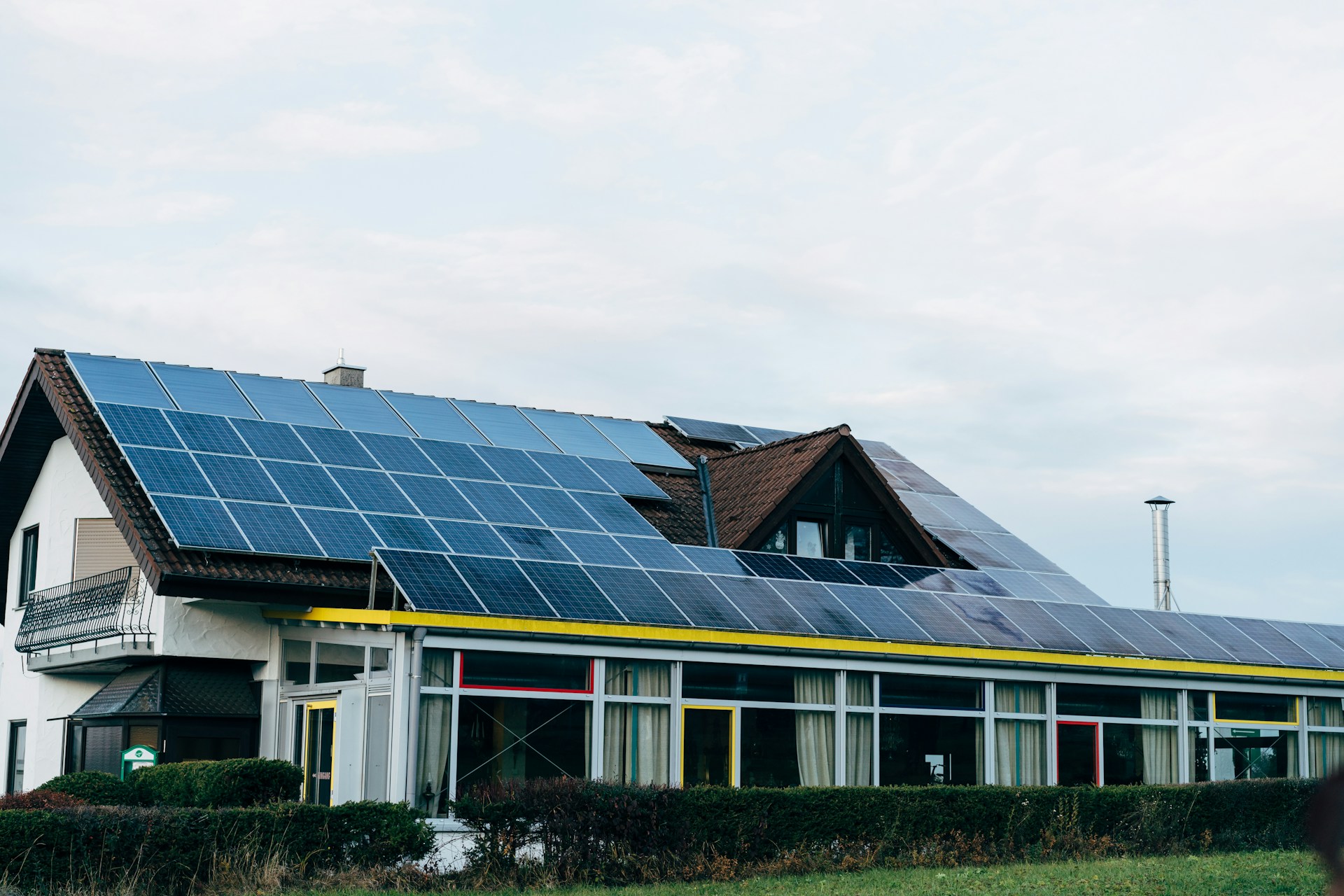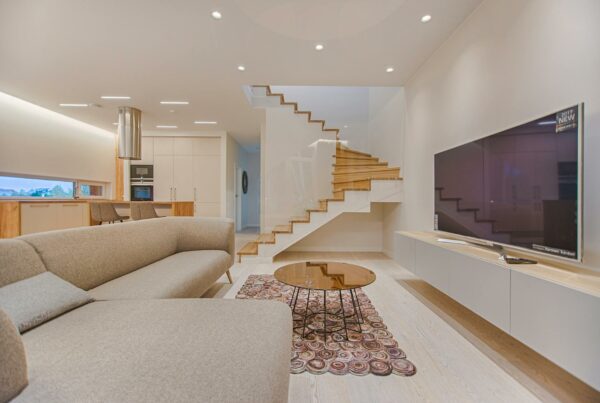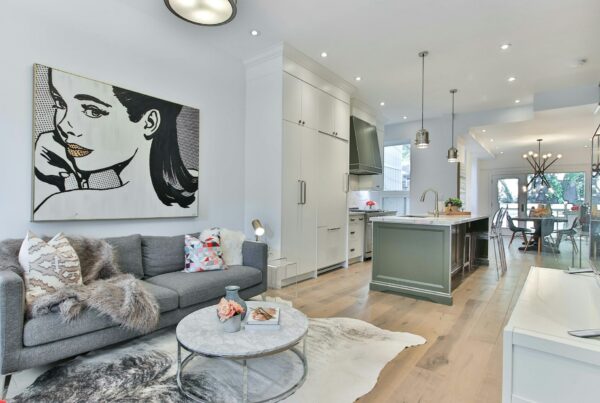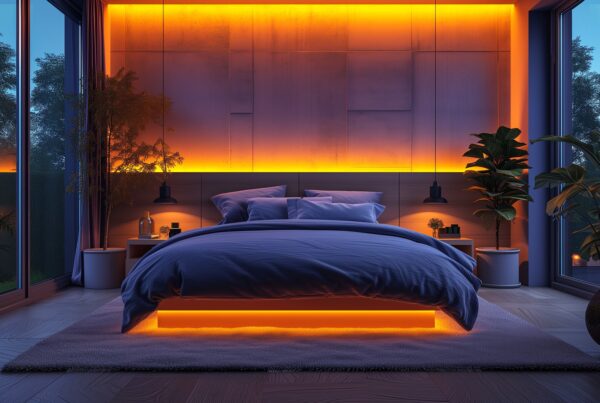Last Updated on February 11, 2024
The construction sector has a massive carbon footprint, producing inordinate amounts of greenhouse gases.
But homes need to be built! So, how can we mitigate this impact when building and running a household?
Here’s a list of the top 9 trends in sustainable homes for 2024.
Renewable Eco-Friendly Building Materials
Many traditional building materials such as concrete, brick, steel, wood, aluminum, copper, asphalt, shingles, and plastics all have a significant carbon footprint. The construction sector accounts for 37% of greenhouse gas emissions.
One of the best strategies to mitigate this is to shift to eco-friendly, regenerative, and sustainable building materials.
Some of the most popular sustainable building materials being used today are rammed earth, mycelium, bamboo, cork, eucalyptus, hemp, abode, and recycled materials.
Bamboo and cork are the perfect sustainable materials for flooring, walls, furniture, and decor. Recycled wood, rammed earth, hempcrete, and straw bales are incredibly efficient at insulating and ideal eco-friendly options for walls. Use recycled clay, metal, concrete riles, natural slate, and wooden shakes or shingles for your roof to reduce energy consumption and minimize environmental impact.
Water Conservation Strategies
All new residential buildings in New South Wales are required to meet certain provisions that confirm their sustainability. Visit Green Choice Consulting to view what water, thermal comfort, and energy targets you need to reach to receive certification.
There are many ways to reach your water sustainability target. These include water catchment systems, greywater recycling, pressure reduction, cooling towers, and low-flow fixtures.
Place a barrel under a gutter to collect rainwater runoff. This water catchment system collects otherwise wasted water for you to use for irrigation, toilets, and showers.
A greywater recycling and filtration system reduces water use by recycling the water from washing machines, sinks, showers, and bathtubs. This greywater can then be used for irrigation, toilet flushing, and exterior cleaning.
Prefabrication
Many may turn their noses up at prefabricated houses. However, they have come a long way in the past years. Prefab houses are a fantastic solution for affordable and sustainable home designs.
The prefabrication process involves assembling components of the building in a factory or another manufacturing site. These complete assemblies or sub-assemblies are then transported to the construction site where the structure is intended to be located.
Here’s a list of benefits of prefab housing:
- Reduced construction costs and time.
- Less material waste.
- Little disruption to the building site and the surrounding community.
- Safer working conditions.
- Reduced operational energy.
- Improved construction quality.
Repurposing Existing Materials
We’re moving away from demolition and rebuilding in 2024. Repurposing, reusing, and recreating are the new trend.
Repurposing existing materials that are already available to us is a creative solution that helps reduce waste and conserve natural resources. Instead of discarding wood, metal scraps, and old bricks, we’re reclaiming them and turning them into building materials for unique and interesting furniture and basic structures.
This closed-loop system minimizes the amount of waste that ends up in landfills and natural ecosystems.
Greener Gardens
Plant a garden full of plants that don’t require too much water to thrive, which is the case for many local plants.
Native plants are naturally already adapted to the local conditions. This means they’re usually low-maintenance, saving you both water and effort.
Furthermore, with the addition of native plants in your green garden, you can start a pollinator garden. Another way native plants are beneficial is that they attract local pollinators, such as bees, butterflies, and birds, which are crucial elements in the support of local ecosystems.
Renewable Energy
Another top trend in sustainable homes in 2024 is transitioning from fossil fuels towards renewable energy to power one’s home.
Solar power is a well-known renewable energy source, and for good reason. Solar panels harness the power of the sun to generate electricity to power a home’s appliances, lighting, and heating systems. This lessened dependence on traditional energy sources (fossil fuels) significantly lowers a home’s carbon footprint.
Solar power is a clean, versatile, flexible, and low-maintenance sustainable solution that increases the property of your home! Learn about the ins and outs of solar panels to get your sustainability journey started ASAP.
Smart Home Strategies
Thermostats, lighting, irrigation, appliances, and plugs are all examples of traditional systems that can be converted to more efficient and environmentally friendly smart systems.
Smart thermostats use artificial intelligence to learn a household’s patterns and preferences. Once learned, a smart thermostat will adjust the temperature of the house accordingly. Ultimately, this smart technology reduces energy consumption and lowers heating and cooling costs.
Use smart lighting and optimize natural light for stylish home lighting with an efficient electrical system. Smart lighting systems use motion sensors and timers to ensure that lights are only on when they’re needed. Once again, this smart technology reduces energy consumption and saves you money on electricity bills.
Biophilic Design
The biophilic design merges the built environment with the natural world, incorporating natural elements into the building design. These natural elements could include greenery, natural light, and water features.
Green roofs and walls are an essential part of the biophilic design. This incorporation of vegetation into a building’s roof and walls does wonders to help regulate the building’s internal temperature. Other benefits include reducing stormwater runoff, mitigating the urban heat island effect, lengthening roof lifespan, and saving money on heating and cooling systems.
Additionally, green walls and roofs welcome birds and insects, providing a habitat for them and contributing to the local ecosystem. Not to mention they’re aesthetically beautiful and improve the well-being and productivity of occupants of the house!
No-Waste Kitchens
Statistics show that 288kg of waste per capita was sent to landfills in 2022 in Australia. Food waste decomposes in these landfills. This process emits greenhouse gases and impacts the climate negatively, contributing to climate change and global warming. Furthermore, massive quantities of natural resources that went into farming this waste is lost.
This is where no-waste kitchens come into play. Simply composting your household’s organic food waste is an easy way to start where you are and do what you can for the environment.
The food waste your household composts has vital nutrients that can be used in your garden, donated to a community garden, or sent to the farms.





